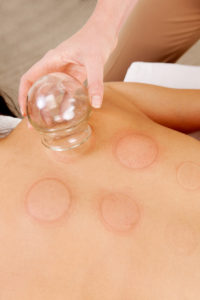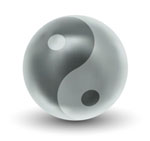“The road to good health is not always a clear path.” – by Susan Tretakis
The problem with being someone who wants to totally embrace Chinese medicine and homeopathic healing while having a deeply ingrained Western mindset is that when you hurt – you want the hurt to stop – immediately. It’s that panic that leads you to prescription drugs.
This past week has been a health nightmare for me. I suffer from sciatica – which in the past has been treated by cortisone shots and prescribed anti-inflammatory and muscle relaxers. And yet, while the relief was immediate, every three to six weeks the pain would randomly return – sometimes a light twinge – sometimes a breath-stealing seizure.

So, when the pain of sciatica knocked me from my sleep a week ago, it was time to think of an alternative – something that would help me NOW and still be truthful to Chinese medicinal beliefs that I hold dear. The problem with sciatica is that the origin of the pain is often unknown, and imaging studies may fail to determine the cause. If you have ever had sciatic pain, it needs no description.
It was interesting to read that to many professionals, sciatica is not truly a diagnosis but actually a description of symptoms. The pain from the sciatic nerve radiates from the buttock down the leg and can travel as far as the feet and the toes. The pain may start slowly – and it may get worse at night, after standing or sitting for long periods of time, when sneezing, coughing, or laughing, after twisting, or bending.
I know what you’re thinking and you’re right: sciatica can occur at any age after doing anything.
Even more of a reason to have a Chinese doctor who is a kind, certified and qualified acupuncturist on call.
It took four long days of suffering and the realization that the pain was not going to go away, I found myself face-down on my acupuncturist’s table where he explained “cupping” to me. Trying to focus on his words and not my pain, I did hear him explain that both cupping and acupuncture are similar because they both promote optimal “Qi” by drawing energy and blood flow to areas of the body that are experiencing inflammation. The suction and negative pressure provided by cupping can loosen muscles, encourage blood flow and sedate the nervous system. Cupping is used not only to relieve back and neck pains, stiff muscles, anxiety, and fatigue.
I had only one question: Would I hurt more?
Assuring me that I would be the one to determine that – and that he could stop at any time, he began. Cupping does feels a bit strange at first – somewhat like a dull pinch as the suction was created. Since I had multiple cups placed from my back down and around my leg what was most noticeable is how loose the previously very tight area felt.
And then – after about 20 minutes – I realized I didn’t hurt anymore.
At all. No pain – no prescription drugs!!
Combined with a session of acupuncture, I walked out of the office much differently than when I walked in. So – armed with stretches and web links for sciatica treatments, I rushed home to research this thing called “cupping”.
Up until that day, my idea of Chinese medicine was acupuncture combined with the use of natural herbs as healing remedies. Cupping is a lesser-known treatment that is also part of Oriental medicine and truthfully, one that can provide a relatively pleasant experience. One of the earliest documents of cupping can be found in the work titles “A Handbook of Prescriptions for Emergencies” which was written by a Taoist herbalist by the name of Ge Hong and which dates back to 300AD. It was known to heal pulmonary thrombosis. In relatively recent times it is mentioned for healing muscle aches and pain from overwork or over training. Cupping was recently brought to the public’s attention by Michael Phelps experience with it during the Olympics, but you do not need to be an Olympian to benefit. Cupping therapy works to restore the body’s equilibrium and thus heal the patient and provide pain management.
Like acupuncture, cupping follows the lines of the meridians. There are five meridian lines on the back, and this is where the cups are usually placed. Because my pain continued down my leg, cups were placed there as well. Using these points, cupping strives to “open” these channels – the paths through which the life energy flows freely throughout the body, through all tissues and organs, thus providing a smoother and more free-flowing “qi” (life force). Cupping is one of the best deep-tissue therapies available. It is thought to affect tissues up to four inches deep from the external skin. Toxins can be released, blockages can be cleared and veins and arteries can be refreshed within these four inches. Research has shown that hands, wrists, legs, and ankles can be cupped, thus applying the healing to specific organs that correlate with these points.
I wish I could tell you I was successful in eliminating my sciatic pain for good, but I cannot. Thrilled at suddenly being pain free, I took to my old habits of doing too much too soon, of sitting at the computer for too long at one time and insisting on cleaning the floors in my house. The pain began to nibble at me about a week after my initial cupping/acupuncture treatment, but I am grateful that I knew when to stop – and when to schedule my next appointment. Sciatica can come and go until the nerve is no longer inflamed and can feel great one second and the wrong twist or movement can cause it to quickly get irritated. Research tells me that sciatic pain can take up to six weeks to go away – unless there is some serious underlying conditions. And, perhaps the most annoying, is the fact that depending on the cause of sciatica, symptoms may come and go.
I am determined to beat this. Chinese medicine tells you to listen to your body – that it is the true guide of what’s right and wrong for you. I just have to learn to listen to my body better.
And keep my kind, certified and qualified acupuncturist, Chinese doctor on speed dial!
Learn more about Susan’s favorite acupuncturist
